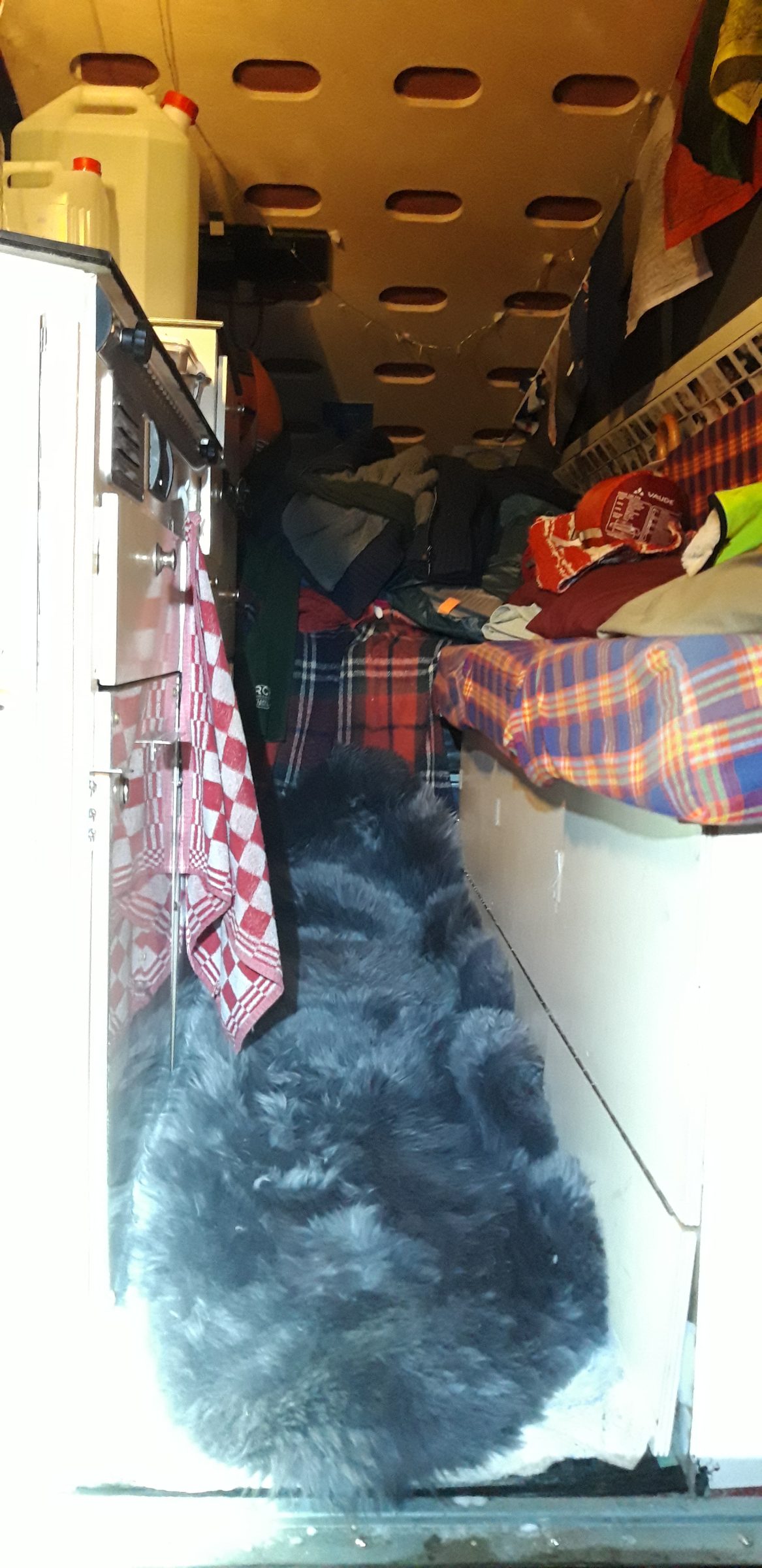Overlooking the Adriatic Sea in Southern Italy, we think back to our overlanding adventure with Milady Landy through Northern Europe in winter. From October 2021 to May 2022 we traveled with our Land Rover Defender motorhome through Northern Europe.
Traveling through 8 Northern European countries in winter will require a different approach than what we are used to. In this blog we tell you why we did that and how we prepared for it. In part 10 we tell you how we experienced / endured it.

Why travel in winter conditions?
Our travel experiences
As we mentioned in our previous article (read here) we shared that we are traveling full-time. Our previous trips were mostly in summery environments or at least in climatically mild conditions. We traveled (in an even older Land Rover) for 6 months through Southern and East Africa in 2016/17.

We stayed in Morocco in 2019/20 and experienced the start of the Covid-19 pandemic there. Thanks to Corona, we had the opportunity to discover the Netherlands and Europe a little better.
Traveling in the winter
But, our plan is to travel the world, full-time, so summer and winter, in all climates. So we have to be able to handle that too. Our Land Rover Defender and we must also be equipped for the harsher winter conditions.
That is why, also in view of the travel restrictions in the world, we choose to travel Northern Europe in winter. The North Cape is one of our goals. The snow and ice will make driving more difficult. The temperatures are a challenge for us and our Milady Landy.
How did we prepare for our winter trip?
When preparing for such a winter trip, you mainly think of winter clothing, but the car must also be able to withstand the polar temperatures.
Our clothes
Layers, layers and more layers. That's what we were advised. The expected temperatures can drop below -20°C and then you won't make it with a winter jacket and gloves.
In the Netherlands we packed the summer clothes in the roof box. The winter clothing is packed in separate clothing bags that we store in the interior.

In retrospect, we mainly used our boots and gloves a lot and wore our thermal underwear every day in the far north. The bear hats in the photo above have been left unused in the garment bags. A good woolen hat, possibly with fleece inner lining, has proven to be more than sufficient. If necessary, we put the hood of our winter coat over it.
In Norway we did buy extra clothes, for Sonja a warm overskirt and leg warmers and for Gert Jan a thermal overall.



We are glad that we experienced the worst cold in Norway, so we were able to buy extra clothing that we needed.
Winterizing the car
outer cloth
During our trip to Morocco in 2019, we experienced in the Pyrenees that the canvas of our lifting roof is not completely waterproof when it snows. That is why we had an extra outer cloth made. This cloth also serves as thermal insulation at the expected low temperatures.

Heating
A Webasto engine heater heats up the cooling water and controls the car heater for additional heating of the interior. Our Wallas cooker/heater serves as the main heating system for the interior space. The heating function works well, even in the extreme temperatures we experience in the north.
The water freezes, despite heating elements and insulation of the water system. At temperatures below -5°C we have to switch off the drinking water pump and use water from the jerry can that we keep in the interior.
Insulation
The window insulation on the inside of the windows provides some extra comfort, yet we defrosted the windows many mornings with our hair dryer.

On the way in Norway we bought an extra sheepskin that we use as extra mat/soil insulation. That way the cold doesn't get so bad.

We sleep under a sheep wool duvet with an extra blanket over the foot end. With our thermal underwear on under our pajamas and close together, we stay nice and warm, even at night without heating.
The tires
We have snow chains and our tires are All-Season, so we are well prepared. At least we thought so.
In Norway, during the first snow days we found out that our tires still lack grip. During a weekend of the Norwegian Land Rover Club where we were invited, we got the following tips:
- The tires get even more grip (in the direction of travel) if micro-cuts are applied, any good tire shop in Norway can do this. The process of making these small cuts across the tread is called siping;
- About 100 studs need to be fitted in each tire (we bought them at the Felleskjoppet in Norway, 7,9×9,8mm, 100 in a box, about €85 per box). This promotes grip transversely to the direction of travel;
- The studs in the tires are especially effective if they are applied to the outer edges of the tread;
Our journey through Northern Europe
With these preparations we leave on October 5, 2021 The Netherlandstowards Scandinavia. 8 months later we are back in Etten-Leur. We then traveled through 10 Northern European countries in the winter. Denmark, Sweden, Norway, Finland, Estonia, Latvia, Lithuania, Poland, Iceland and the Faroer Islands.
Also read: Roadtrip Iceland with 4×4 camper (part 2) | NoFear Travelogue

In Northern Europe in winter (part 2: the journey) we tell more about our winter adventures.











